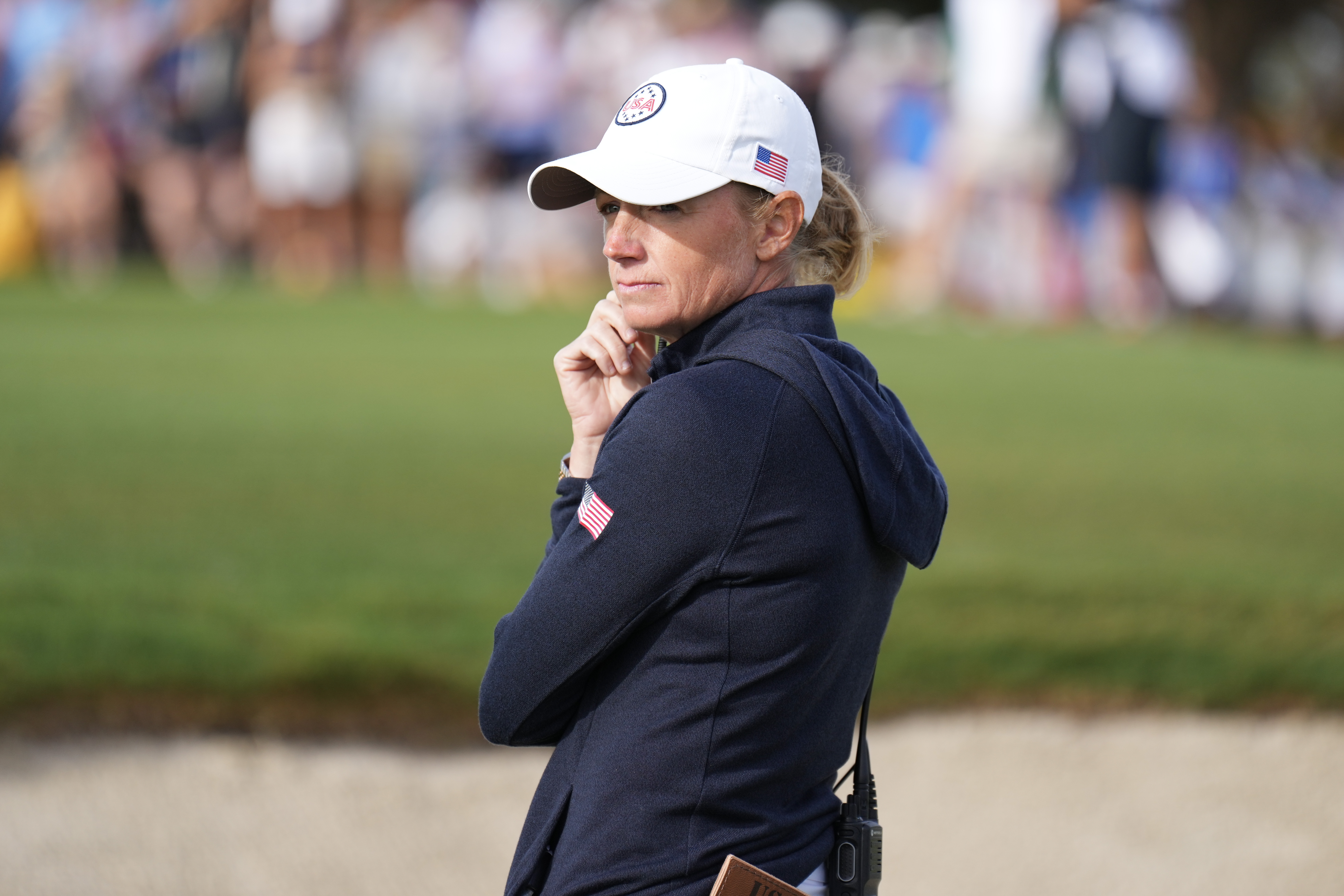On paper, the outlook might seem bleak. For the first time in history, the Americans have lost three Solheim Cups in a row. Scroll back a bit more, and it’s a whopping five of the last seven.
Stacy Lewis told her team they didn’t lose – it was a tie. And while the scoreboard indicated such with the first 14-14 finish in Solheim Cup history, one team celebrated on the 17th green and one team cried. The U.S. failed to accomplish what it set out to do, as Europe retained the Cup in dramatic fashion.
And yet, there’s no need to panic.
When the U.S. lost by eight points on home soil in 2013 in Colorado, it certainly felt like there needed to be a cultural shift. Enter Juli Inkster with her hard hats and lunch pails. She got rid of the hair ribbons and face paint and told her team to get to work.
Two years later in Germany, the U.S. pulled off the greatest comeback in history, and the Inkster era was born.
Stacy Lewis came to southern Spain with a fresh-faced, hard-working team that’s naturally more reserved. They didn’t need rah-rah. They needed guidance and experience. The overprepared Lewis, stats book in hand, provided that in spades, leaving no detail to chance.
Lewis also worked hard to make sure this next generation understood what they’d become part of in Spain. From the stars and stripes on their bags to the “88” on their hats, each U.S. Solheim Cup player was a walking display of history.
Captain Lewis truly cared about more than results this week. She wanted her team to leave Spain with a deep passion for the Solheim Cup. The week represented a building block for the future.
“I mean, for me, the whole week in general feels like a win,” said Lewis. “Just where we were coming from out of Toledo to where this team is at now, it was a win, and that’s all that matters.
“I think it’s more about these girls, where they are mentally, how they felt about this. They were crying because it meant something to them, and that’s all I was trying to achieve this week.”
In less than one year, Team USA will get another chance to stop Europe’s streak at the Robert Trent Jones Golf Club in Gainesville, Virginia. Lewis said she won’t change much about her process going forward because it worked, and she likes the direction they’re headed.
Next time around, Lewis can build from first-time partnerships that found success in Spain, such as Nelly Korda/Allisen Corpuz (2-0 foursomes) and Lexi Thompson/Megan Khang (2-0 foursomes).

Solheim Cup team U.S. golfers Danielle Kang and Andrea Lee react during the 2023 Solheim Cup at Finca Cortesin in Casares on September 22, 2023. (Photo by JORGE GUERRERO / AFP)
Danielle Kang played her best golf all year in Spain and had nothing but praise for what Lewis put together.
“I know people like to decide on the process on whether we win or lose, but without Stacy’s process,” said Kang, “I think we could have gotten crushed.
“Because she gave us the best opportunity and best chance of percentages to go up against what they brought, and if we have to shoot 10 under to go up against Carlota Ciganda, we did. If we lost, that’s OK. Same thing with Linn Grant, same thing with Maja Stark. She put us up together with the probabilities and gave us the best chance to go up against them.”
Which brings up perhaps the most important point of all: These teams have never been more evenly matched. The quality of golf on display in Spain was exceptional. Birdies or bust.
Team USA has only lost on home soil twice since the Cup began in 1990: 2013 and 2021.
Many, if not all, of the rookies on the 2023 roster will be back next year and they’ll have a number of aspects in their favor: They won’t be rookies anymore; they’ll have the support of a home crowd; and they’ll have history with their partners.
In other words, they’ll be much tougher to beat.
Angela Stanford, an assistant captain who has been part of Team USA since her Solheim debut in 2003, wrote on Instagram in the aftermath that learning how to win in Europe is one of the most difficult things she’s ever done. There’s a reason, she noted, that the U.S. has only won three times on foreign soil in the Solheim Cup, and it’s been 30 years since a U.S. Ryder Cup team accomplished the feat.
This was a changing-of-the-guard year for Team USA. There’s been another shift.
“I watched something special happen this week,” wrote Stanford. “Looking forward to next year and years to come for this team.”

